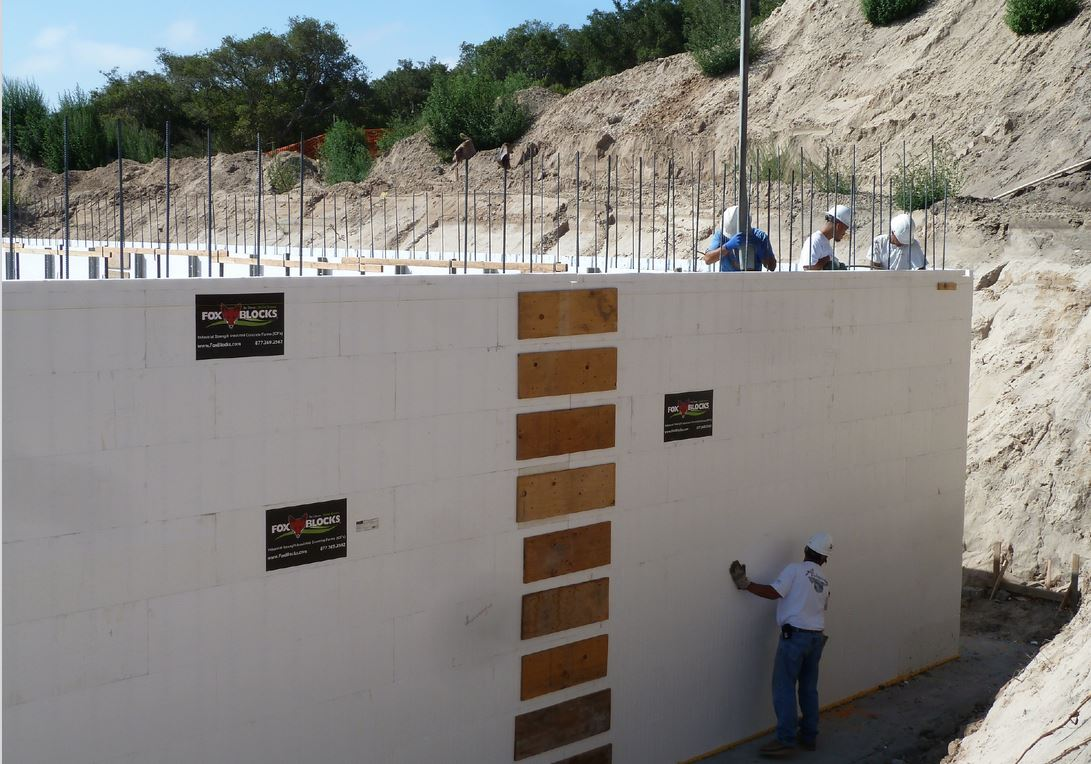
How to Build a 4-Hour Fire Wall: Thickness, Materials, and Assembly

Fire walls are life-saving structures required in many buildings to slow down the spread of fire. A fire wall’s rating is how long it should be able to resist the spread of fire before failing. Higher-rated fire walls result in less property damage and more lives saved when fires break out, but how do you build a 4-hour fire wall?
What is a Fire Wall?
A fire wall is simply a wall system that is designed to withstand fire penetration for a given amount of time. The longer a fire wall’s rating, the longer it can withstand a fire.

Fire walls must be carefully constructed to ensure that both the right materials and correct techniques are used to build the fire wall. Maintenance is often needed over time to ensure the wall does not lose any of its fire resistance.
2-Hour Versus 4-Hour Firewalls
Typically, the higher or longer a fire wall’s rating, the more difficult it is to build. Most code requires 2-hour fire walls to prevent the spread of fire through townhomes, condos, and apartment buildings. 2-hour fire walls are constructed between units to slow down the spread of fire through the entire building.
4-hour fire walls are often harder to build than 2-hour fire walls because they must be able to withstand the intense heat of a fire for twice as long. When using conventional materials, 4-hour fire walls can become quite expensive.
How Are Fire Walls Built?
Fire wall construction can typically be broken into two different categories: the wall assembly, and the accessories.
Wall Assembly
To achieve better fire ratings, walls are usually constructed with a mix of different materials and techniques. Using steel studs rather than wood is an easy swap to make. Special-rated insulation is also helpful for boosting a wall’s fire rating.
Using special assembly techniques is another good way to increase a wall’s fire resistance. Air space is often an important parameter in building a fire wall. Creating space makes it harder for heat and fire to travel, but also results in a larger wall assembly. Hollow sections are created around I-beams to protect the column and reduce thermal conductivity. Cold-formed steel clips are also used to connect gypsum board to I-beam flanges to create more air space.
Once complete, it is extremely important to have both 2 and 4 hour fire walls tested to rigorous standards and approved. The wall assemblies must not allow flame to penetrate and must be structurally sound as a load bearing walls for the duration of the fire test. Even the best construction may miss something, and this is a situation where any mistakes can be catastrophic, if not deadly.
Accessories
Doors are often the weak spots when it comes to building a fire wall. Doors have a fire rating classification based on the time they can withstand a fire. Steel door fire ratings range from 20 minutes up to 90 minutes. 3-hour fire-rated steel doors are possible but require tight restrictions on door size, glass size, and other parameters.
Any penetrations through a wall make it more difficult for that wall to achieve a high fire rating. Sidelight assemblies, louvers, doors, window frames, and glass will all have to be taken into consideration when rating a fire wall.
ICF Walls Make Better Fire Walls
Insulated concrete forms (ICF) are foam blocks that can be quickly assembled on-site in the shape of the wall being built. The interior and exterior panels of foam insulation are held together with polypropylene ties to keep the space between the panels open. Once assembled, steel reinforcing bars are added to the hollow cavity and concrete is poured into the cavity as well. Once set, the wall is made from steel-reinforced concrete with both interior and exterior layers of continuous insulation.

ICF walls are inherently great firewalls and can easily achieve many fire ratings. Concrete itself is inherently fireproof and does not allow heat of flame to transfer through easily. A six-inch Fox Blocks ICF carries an ASTM E119 four-hour fire rating. The airtight nature of ICF construction also limits and prevents the fire from spreading.

ICF walls are also inherently more resilient to fires over time. An ICF structure is built as a continuous structure. Conventional construction techniques make it more likely for shifting to occur inside the wall assembly allowing for gaps that must be sealed to maintain a fire rating.
Entrust Fox Blocks with the Best ICF For 4 Hour Fire Walls
ICF blocks from Fox Blocks make for an inherently fire-resistant structure. Not only do they easily hit the requirement for a 4-hour fire wall, but they are more likely to retain that rating over time. With Fox Blocks, life-saving fire walls are easier to build. To learn more about Fox Blocks and how they work as a part of firewalls, contact our team of experts today.